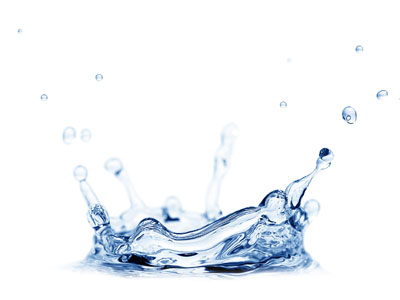Why is rain not salty?
How does this align with my curriculum?
Make a model of the water cycle and find out how water moves around on planet Earth.
What You Need
- Large container with a flat bottom
- Small glass or jar
- Table salt
- Plastic wrap
- Elastic
- Weight or rock
- Warm water
- Light/heat source
- Safe place to leave container for 1-2 days under light/heat source
Safety First!
Never leave an electric heat source unattended. Keep all flammable objects away from an electric heat source.
What to Do
- In the large container, dissolve some salt in one or two inches of warm water. Use enough salt to make the water taste salty (test by dipping in your finger and tasting).
- Place the glass or jar in the centre of the large container, making sure it doesn’t tip over in the water. Make sure the top of the glass is a few inches lower than the top of the large container.
- Cover the top of the large container loosely with plastic wrap and secure it around the edges of the container with an elastic band. Make sure the entire top is covered and no air can get in or out.
- Place the weight or rock on top of the plastic wrap directly above the glass.
- Place the apparatus under the sun or a light/heat source for a day or two.
Discovery
The heat will cause the water at the bottom of the large container to evaporate. It will condense and collect on the surface of the plastic wrap (like a cloud), and then it will run down to the lowest point of the plastic, under the weight or rock and will drip into the glass (like rain). The salt, however, will not evaporate with the water and so, the water in the glass should taste clean. This is why rain is fresh and not salty, even if it comes from seawater.
When the sun heats the oceans, the water vapour that forms rises to cooler temperatures and condenses as clouds. Air currents circulate these clouds around the globe. Eventually, so much water condenses that the clouds become heavy and precipitation is released, usually in the form of rain. This process is known as the water cycle.
Precipitation, like rain, snow, and mist, is an important source of fresh water. Only about 2.5% of the Earth’s water is fresh water. Of that 2.5%, most is frozen in glaciers or is present as ground water. This leaves only 0.001% of the world’s water accessible for drinking. Without freshwater precipitation, like rain, available basins of fresh water, such as lakes and rivers, would dry up.
- Check the apparatus frequently while under the light/heat source. What happens to the salt water?
- Taste any water that forms inside the glass. What do you think has happened to the salt water?
For more information on this topic check out these Let's Talk Science resources:
- The Water Cycle (Picture Collections) - 1 diagram illustrating the water cycle
- What is the water cycle? (Lessons) - Students develop the skills of observing and recording observations as they explore how the water cycle works.
- Ringwoodite and the Deep Water Cycle (STEM in Context) - The water in the oceans has travelled vast distances. It has even time spent deep below the surface of the Earth, trapped inside the mineral ringwoodite.
What’s happening?
The heat will cause the water at the bottom of the large container to evaporate. It will condense and collect on the surface of the plastic wrap (like a cloud), and then it will run down to the lowest point of the plastic, under the weight or rock and will drip into the glass (like rain). The salt, however, will not evaporate with the water and so, the water in the glass should taste clean. This is why rain is fresh and not salty, even if it comes from seawater.
Why does it matter?
When the sun heats the oceans, the water vapour that forms rises to cooler temperatures and condenses as clouds. Air currents circulate these clouds around the globe. Eventually, so much water condenses that the clouds become heavy and precipitation is released, usually in the form of rain. This process is known as the water cycle.
Precipitation, like rain, snow, and mist, is an important source of fresh water. Only about 2.5% of the Earth’s water is fresh water. Of that 2.5%, most is frozen in glaciers or is present as ground water. This leaves only 0.001% of the world’s water accessible for drinking. Without freshwater precipitation, like rain, available basins of fresh water, such as lakes and rivers, would dry up.
Investigate further
- Check the apparatus frequently while under the light/heat source. What happens to the salt water?
- Taste any water that forms inside the glass. What do you think has happened to the salt water?
For more information on this topic check out these Let's Talk Science resources:
- The Water Cycle (Picture Collections) - 1 diagram illustrating the water cycle
- What is the water cycle? (Lessons) - Students develop the skills of observing and recording observations as they explore how the water cycle works.
- Ringwoodite and the Deep Water Cycle (STEM in Context) - The water in the oceans has travelled vast distances. It has even time spent deep below the surface of the Earth, trapped inside the mineral ringwoodite.
